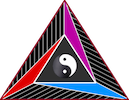India, often hailed as the world’s largest democracy, has an intricate political system inspired by the British Westminster model. However, understanding the multifaceted nature of Indian democracy requires delving into several aspects, including its political structure, secularism, history, and challenges. This article offers an in-depth analysis of each of these facets, underpinning the essence of democracy in the subcontinent.
The Indian Political System: An Overview
The Indian political system is a complex blend of federal structure and unitary features. The country’s political code, powers of government, and citizens’ rights are enshrined in its Constitution.
The Pillars of Indian Democracy
The Indian democracy rests on four pillars:
- The President, the nominal head of state,
- The Executive, led by the Prime Minister,
- The Legislature, comprising an upper and lower house (the Rajya Sabha and Lok Sabha), and
- The Judiciary, headed by the Supreme Court.
The Role of Elections in Democracy
General elections, held every five years, elect 543 members to the Lok Sabha following a first-past-the-post system. The Rajya Sabha members are indirectly elected by state legislatures on staggered six-year terms, ensuring a partial change every two years.
The Impact of Caste System in Indian Politics
India’s caste system, a hierarchical social structure, plays a significant role in the country’s politics. Although the Constitution prohibits caste discrimination and early governments implemented quotas for fair job and education allocation, caste remains a potent factor in political dynamics.
Secularism and Democracy: The Indian Context
Although India is recognized as a deeply religious country, it has been defined as a secular state since the 1975 emergency. The Constitution prohibits the persecution of individuals based on their religious beliefs, demonstrating the essence of secularism in Indian democracy.
Religion in Indian Politics
Religion plays a crucial role in Indian politics, with politicians often courting votes based on caste or religious affiliation. For over a century, Hindu nationalists have advocated for India to be perceived as a Hindu homeland, stirring up a considerable debate in the country’s political landscape.
Tracing the History of Democracy in India
India’s democratic journey has been a rollercoaster ride since its independence from Britain in 1947. From being dominated initially by the Indian National Congress party to witnessing a shift towards coalition governments, the country’s democratic landscape has evolved significantly.
The Era of Congress Dominance
The Indian National Congress (‘Congress’) initially dominated the government, with the party being closely associated with the independence leader, Mahatma Gandhi. Jawaharlal Nehru, the first Prime Minister, served for 17 years, and Congress’s electoral supremacy persisted for approximately four decades.
The Shift towards Coalition Governments
With the gradual erosion of Congress’s support, the country witnessed a shift towards coalition governments from 1989 to 2014. The period witnessed various parties, sometimes led by Congress and at other times by other parties, steering the nation.
The Rise of the Bharatiya Janata Party (BJP)
The Bharatiya Janata Party (BJP), led by Prime Minister Narendra Modi, has emerged as a dominant force in Indian politics since 2014. Known for his Hindu nationalist beliefs and his economic development efforts as the Chief Minister of Gujarat, Modi’s leadership has been a significant turning point in India’s democratic journey.
The Challenges of Democracy in India
Despite its robust democratic system, India faces numerous challenges. Key among them is the failure to deliver sustained economic development and eliminate extreme poverty, which has led to widespread discontent among the poor.
The Economy and Democracy
The Indian election process frequently witnesses the manifestation of economic discontent, with educated elites in globalized cities leading starkly different lives compared to India’s poorest citizens. Low-wage, low-skilled jobs remain the predominant form of employment for millions of young Indians, creating a large population of disenchanted voters.
Nationalism and Populism in Indian Politics
Indian nationalism and populism have capitalized on this discontent by scapegoating religious minorities while increasing pride among Hindus. Prime Minister Modi and the BJP represent the Hindu nationalist movement, whose ideology – Hindutva – has remained consistent for over a century.
The Future of Democracy in India
The future of Indian democracy hinges on several factors. The country needs to address the economic disparities and the rise of religious polarization that are currently undermining the democratic principles. It also needs to ensure that the power of democracy remains in the hands of its citizens, thereby promoting a robust, inclusive political system that truly represents the diverse Indian populace.
In conclusion, the Indian democracy, with its unique blend of federal and unitary features, continues to evolve. It is a testament to the country’s resilience and its commitment to uphold the democratic ideals despite the challenges. The journey of Indian democracy mirrors the nation’s socio-political evolution and offers valuable insights into the workings of the world’s largest democracy.





